If you’ve been to Texas, you’ve probably considered checking out Austin. A city known for its vibrant culture and unique personality, Austin is catching the eye of Texans and visitors to the Lone Star state. It gets special recognition for its live music scene. You can hear everything from country to blues and rock, often pulling big names as well as up-and-coming artists.
Where is Austin Located?
Austin is located in central Texas. It includes parts of three counties: Travis County, Hays County, and Williamson County. It is roughly 80 miles from San Antonio, the nearest large city in Texas. Austin is around 145 miles from Houston and 185 miles from the Dallas-Fort Worth area.

Image: zimmytws, Shutterstock
©zimmytws/Shutterstock.com
The Colorado River plays an important role in Austin’s development and culture. The city is located on the Colorado River and also has major lakes nearby, including Lady Bird Lake, Austin Lake, and Travis Lake. It is on the border of Texas Hill Country to the west and some of the western suburbs have gently rolling hills.
Texas itself is located in the southern part of the United States and borders Mexico. As the state capital, Austin has a lot of cultural significance to Texans. There are artifacts from Texas’ fight for independence from Mexico, as well as monuments, museums, and outreach programs to teach locals and visitors about Texas.
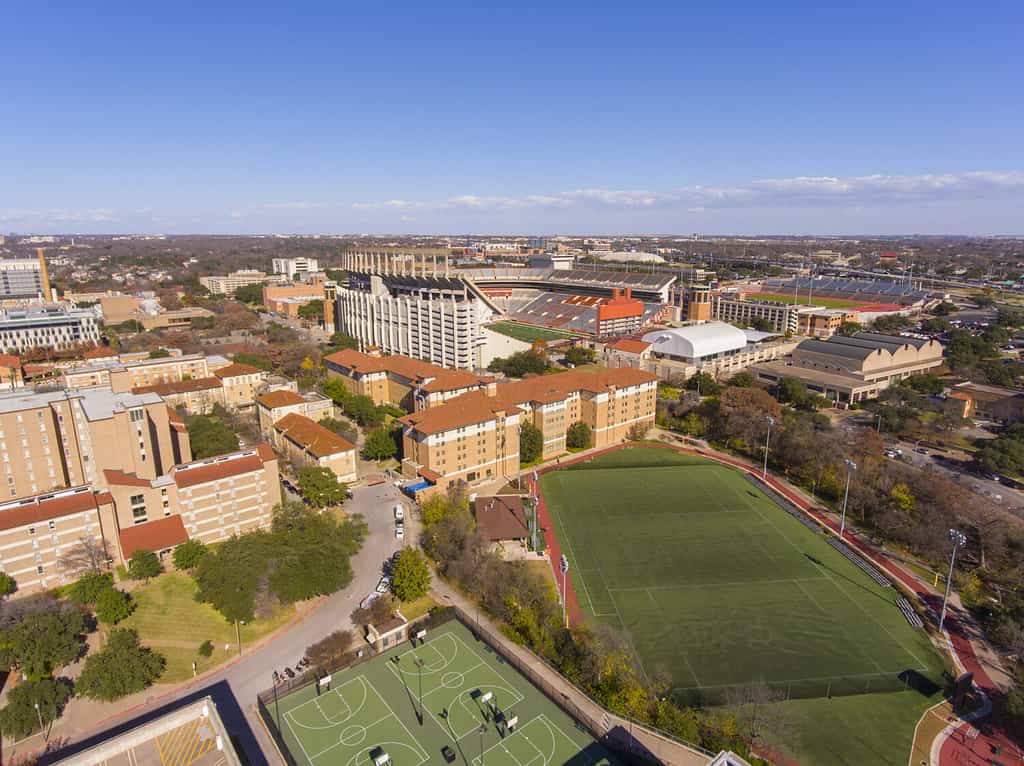
The University of Texas-Austin is a big part of Austin.
©Wangkun Jia/Shutterstock.com
Points of Interest in Austin
There is a lot to do in Austin as well as in the surrounding areas. It is the state capital of Texas and home to the major government buildings and organizations, including the state capital building. In 1986, the building was designated a National Historic Landmark. It was built in 1888 and has many symbols of Texas inside, including the lone star. You can see original artwork depicting the Alamo and the flag carried at the Battle of San Jacinto, where Texas won its independence from Mexico. Austin is also home to the University of Texas-Austin, which has a lot of support from city residents and other Texans.
Congress Bridge is another notable spot, although you need to visit it at dusk to get the full effect. Around 1.5 million bats (estimated because no one has been able to count them one by one, of course) leave the bridge to find food. They do this every night from around March to November.
Live music is another great aspect of Austin. Music festivals, restaurants featuring music, and bars with the next hit band are plentiful. Trying new craft breweries is another popular pastime. If you like to eat, drink, and listen to great music, you’ll love Austin.
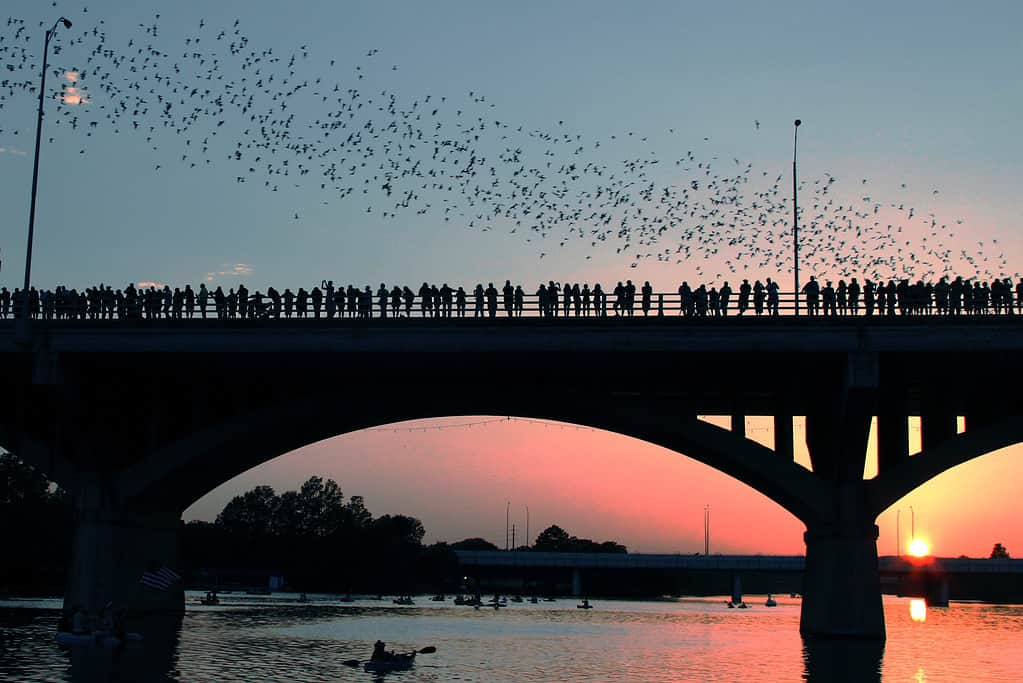
Congress Avenue Bridge is home to hundreds of bats in the summer.
©Kushal Bose/Shutterstock.com
Texas Culture
Texas embodies its own unique spirits and Texans will typically be the first to tell you that they take great pride in their state. Barbecue and beef are staples, mainly due to the thriving cattle industry in Texas. The bluebonnet is the state flower and can be seen around Austin. Cowboys and rodeos are also plentiful, so don’t be surprised to see a cowboy hat or two as you explore Austin. Country music is also popular, although Austin has embraced all kinds of music in its many years as one of the live music capitals of the world.
Outdoor Adventures in the City
Austinites have a love for the great outdoors and even in the most urban parts of the city, green spaces and outdoor adventures are plentiful. Ziker Metropolitan Park has hiking, playgrounds, a botanical garden, an outdoor theater, and access to Lady Bird Lake. There are also plenty of greenways and green spaces in the suburbs around the city.
Swimming holes evoke a true feeling of Texas. Fortunately, you can experience this magic right in the middle of the city. Barton Springs Pool is a 3-acre pool fed by an underground spring. It is a protected habitat for the Barton Springs salamander. You can visit the pool to swim and learn about the ecosystem.
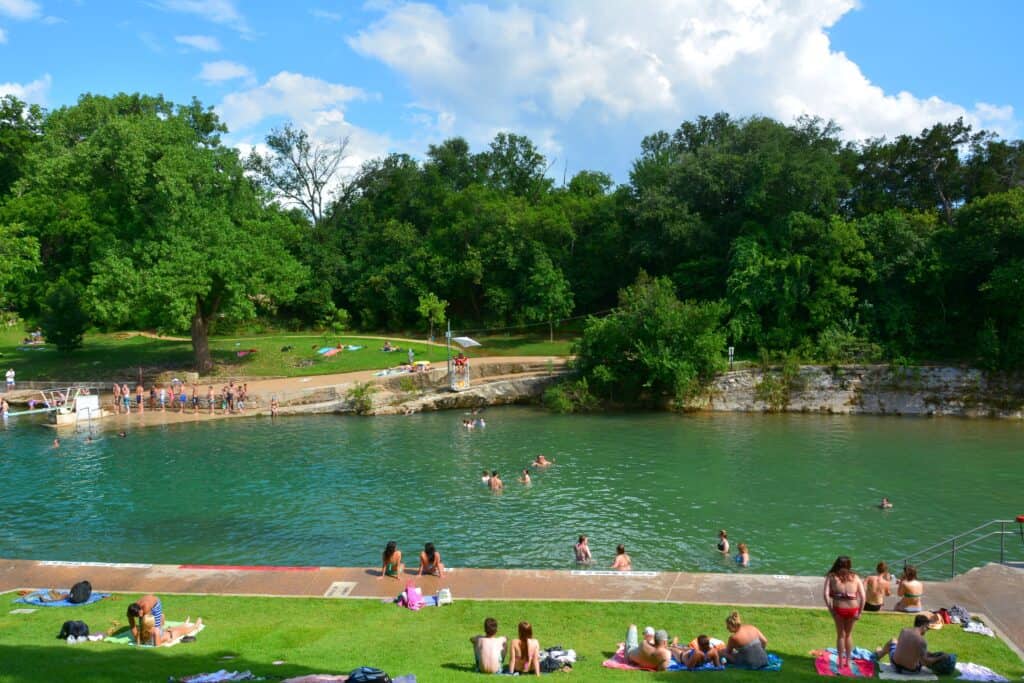
Barton Springs is a popular place to swim.
©Alizada Studios/Shutterstock.com
“Keep Austin Weird”
If you make a visit to Austin, you’ll likely see this slogan around town. “Keep Austin Weird” has been the unofficial motto of the city. It captures the city spirit and commitment to promoting small, local businesses over major corporations coming in. There’s no requirement to be “weird” to enjoy Austin or be an Austinite. But many residents are known to encourage everyone in their individual quirks and eccentricities, including visitors, locals, and businesses. The South Congress neighborhood really embraces this idea and is a great place to shop for a fun and one-of-a-kind Austin treasure. The Rainey Street Historic District is the spot to go for a night out on the town.
Best Cities Around Austin
Considering moving to Austin? You should also check out the surrounding area. While downtown has a lot to offer, cities in the suburbs have their own unique characteristics and styles. See if one of these is more your speed. Traffic can be rough at peak times, so consider the flow of traffic in and out of the city when you look at each suburb.
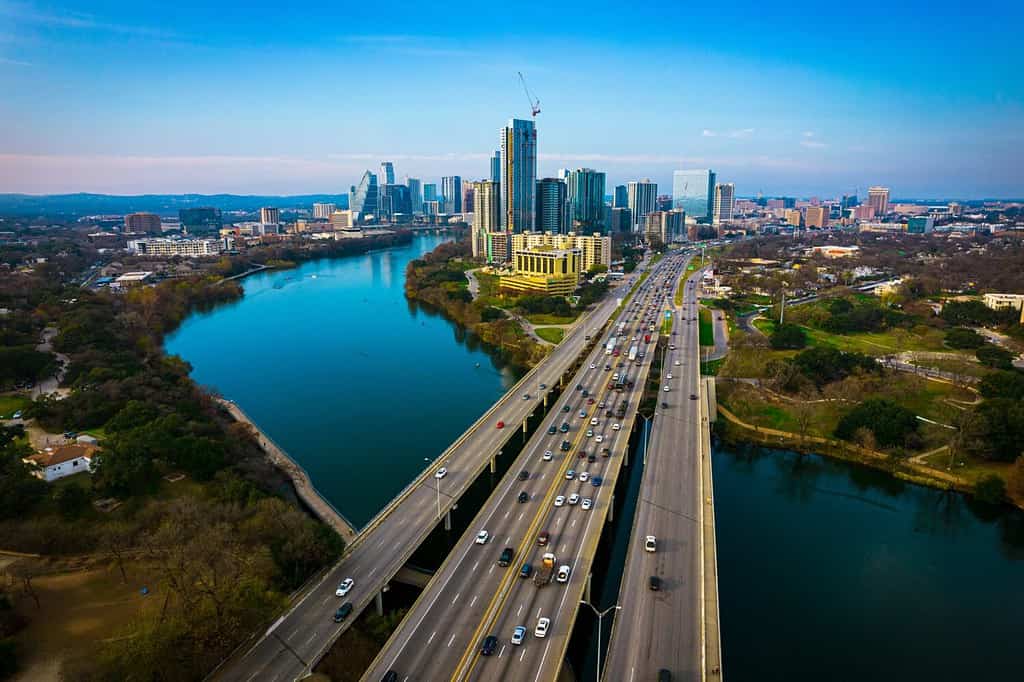
There are numerous suburbs around the city of Austin.
©Roschetzky Photography/Shutterstock.com
Round Rock
This is a larger suburb, around 120,000 people. It is named after a literal round rock, which you can still check out. It is located in Brushy Creek and the location of covered wagon crossings in the 1800s. Today, Round Rock is known for its many communities as well as its active sports culture. Round Rock is expanding and growing, which means a lot of new opportunities for potential new residents.

Around 120,000 people live in Round Rock. Image: Roschetzky Photography, Shutterstock
©Roschetzky Photography/Shutterstock.com
Four Points
The big draw to this area is its proximity to Lake Travis. You can enjoy plenty of fishing, water sports, or just take in a sunset view over the lake. Four Points is around 30 minutes from downtown Austin, making it a good commute for those who work in the city but want a more rural setting for their home.
Shady Hollow
This suburb is a planned community made up mostly of the neighborhoods of Shady Hollow, Shady Hollow Estates, and Shady Hollow Gardens. There isn’t a lot to do as far as recreation or shopping. But if you want to get to know your neighbors and enjoy a quieter pace of life, this is a top suburb to check out.
Lakeway
As its name suggests, lake life is the way of life in Lakeway. This suburb is situated between Lake Travis and Austin, with a lot of lakefront property.
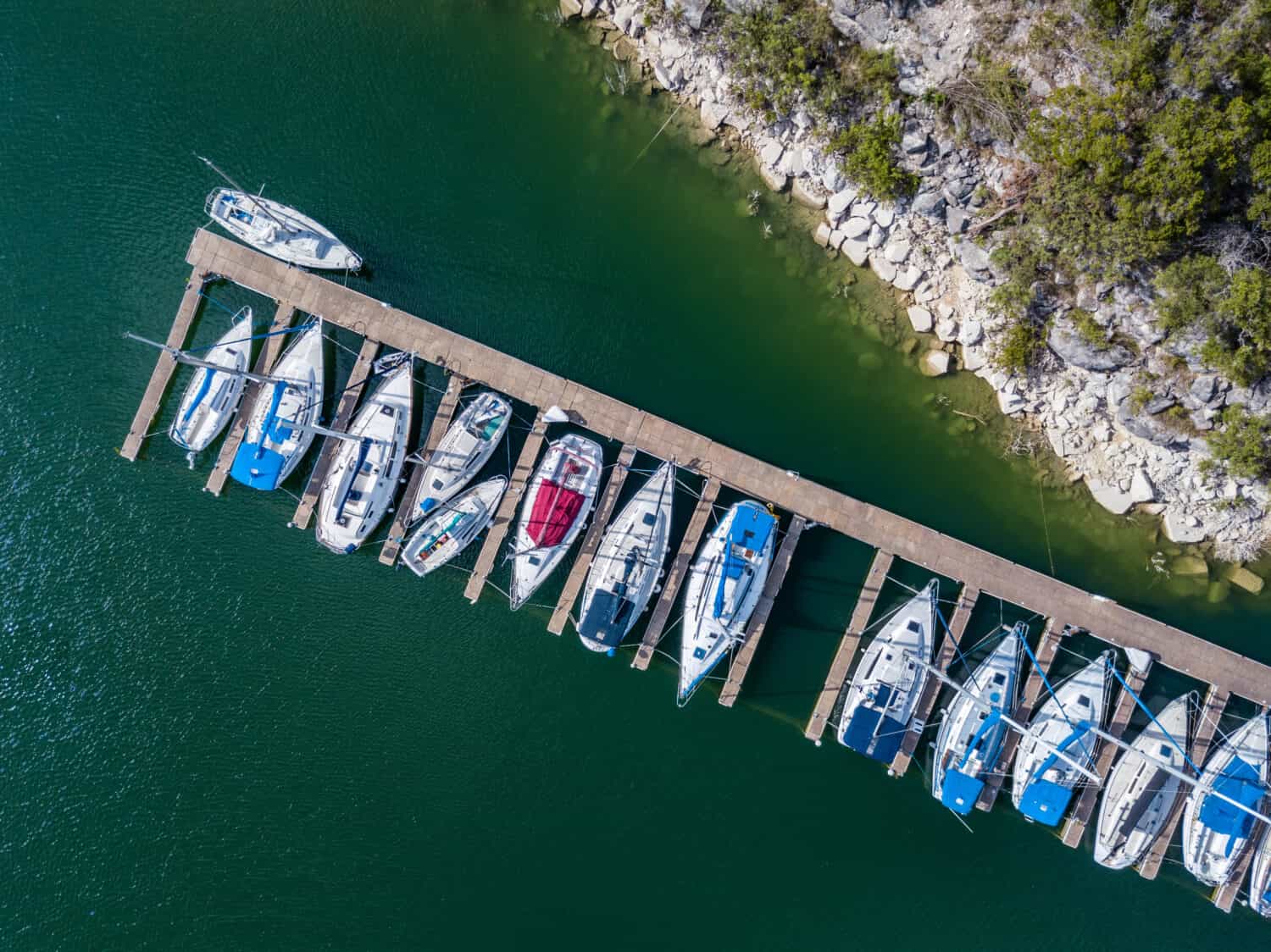
Lakeway is located between Lake Travis and Austin. Image: Regan Bender, Shutterstock
©Regan Bender/Shutterstock.com
South Austin
Can you guess where this suburb is? That’s right, it’s just south of Austin and a good commute for those who work in the city. It has an older, stately feel, especially when it comes to architecture. There are also plenty of parks. There are a few neighborhoods within South Austin that each have their own feel.
Pflugerville
This suburb has plenty of homes and communities. There is also access to Lake Pflugerville and Typhoon Texas Waterpark.
Brushy Creek
Right next to Round Rock, the Brushy Creek neighborhood is a bit smaller with more space between most homes. It isn’t growing as rapidly as nearby suburbs. So if you want a more established feel, this may be the one for you.
Cedar Park
Another suburb that is growing and getting more and more attention is Cedar Park. It has more shopping and recreation than some of the more residential suburbs nearby. There are still plenty of homes, though, if you want to settle there.
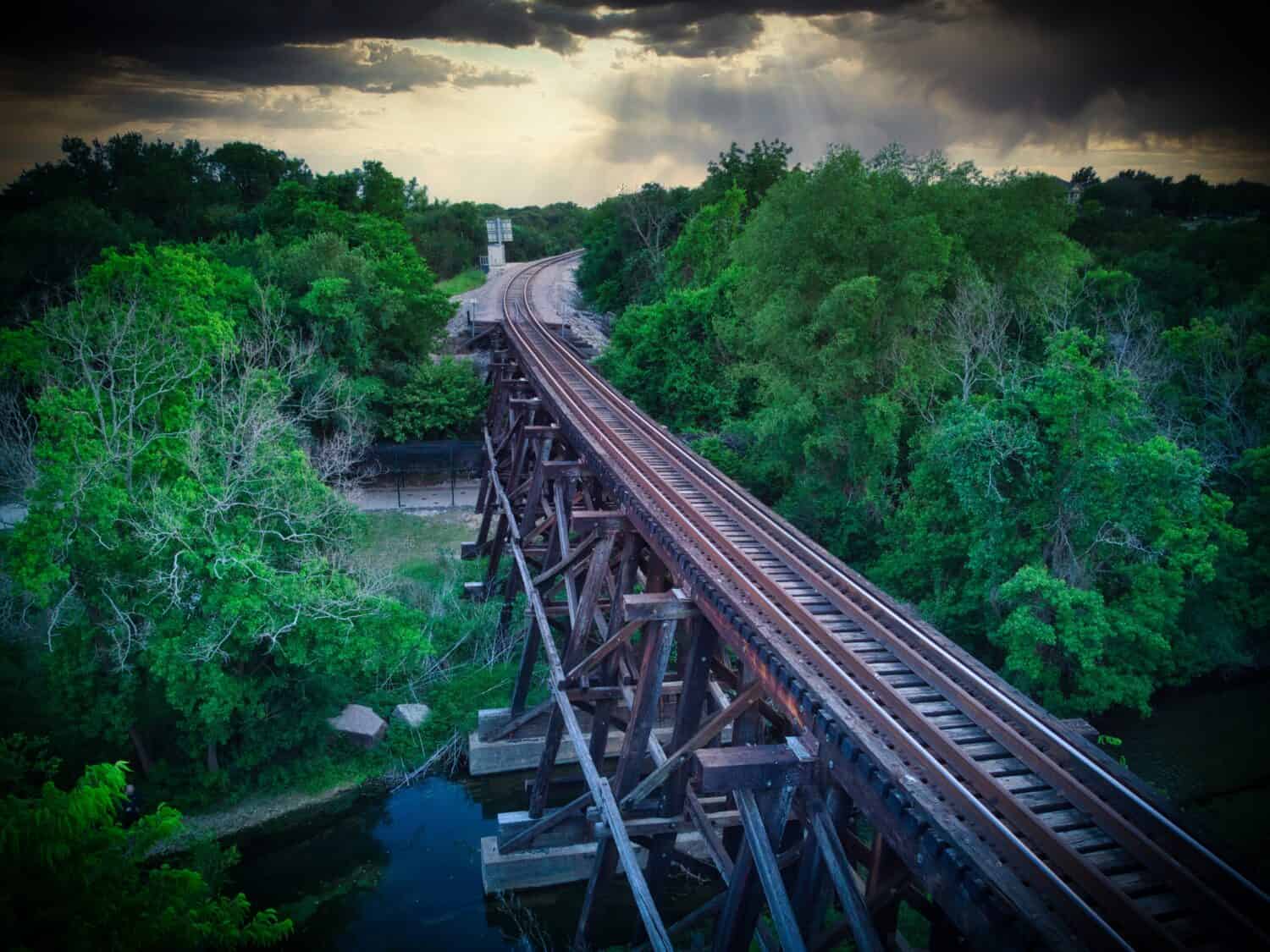
This Narrow Gauge Railroad runs over Brushy Creek in Cedar Park, Texas. Image: Landscapes by Dan, Shutterstock
©Landscapes by Dan/Shutterstock.com
Bee Cave
With just around 10,000 residents, the Bee Cave suburb is smaller but has its own feel. It is located west of downtown Austin at the beginning of Texas Hill Country. This landscape is one of the defining features of Bee Cave, along with support for the arts.
Thank you for reading! Have some feedback for us? Contact the AZ Animals editorial team.








